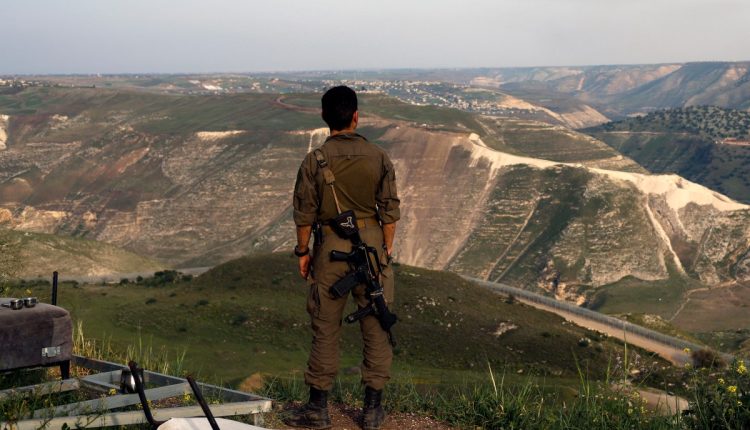Turkey and Its Neighbors: Who Will Be in Charge of Syria?!
By Mohammad Sayed Rassas
There was no friendly neighbor for the Republic of Mustafa Kemal when it was born in 1923. It seemed that the British delegation’s head at the Lausanne Conference and Foreign Minister Lord Curzon intended this when he allowed, as the legal midwife of the new state, that the newborn would not resemble the offspring of the Treaty of Sèvres three years earlier. Likely, this went beyond distancing the Turks from the French in Syria and the Bolsheviks in Russia, especially since London was concerned about Mustafa Kemal’s treaties with the French and Russians two years prior. Thus, it reached the British to plant another explosive body in the region similar to what was planned in London six years prior through the Balfour Declaration.
Mustafa Kemal carried a Turkish legacy of blood with Armenians and Greeks. Bulgaria, on the other hand, was born through a revolution against the Ottomans, while the birth of the Safavid Persian state served as an entry into a clash with the Ottoman state in the Battle of Chaldiran in 1514, a conflict that took two centuries. The Kurds felt betrayed by the founder of the Turkish state when he made it predominantly Turkish and did not accept the Turkish-Kurdish partnership that he had hinted at during his revolution against the multinational occupation forces between 1919 and 1922. Meanwhile, the Arabs were apprehensive of him as he inherited the Turkish saying that “the Arabs stabbed the Turks in the back” through the Great Arab Revolt led by Sharif Hussein bin Ali in 1916; he proposed the “national pact” in 1920, claiming geographic assertions that extended from the Mediterranean Sea to the borders of Mesopotamia and Iran.
In the Lausanne Treaty, the issue of Mosul remained unresolved. In the treaty, the Turks demanded a special administrative and cultural status for the Iskandaruna region as a prelude to its separation from Syria later in 1939 after Paris and London bought Ankara’s neutrality in the war with the Germans. The Turks then tried to barter for the separation of Aleppo and Al-Jazira in May 1941 when the pro-German Vichy French supporters needed to allow French and German resupply trains for the Vichy regime to pass through Turkish territory amid the British naval blockade, which Marshal Pétain refused (Michel Christian Davé: “The Double Syrian Issue: Syria during World War II”, Dar Talas, Damascus 1984, p. 247).
With Turkey’s entry into NATO, an American-British-French-Turkish project called “Middle East Command” was proposed on October 13, 1951, aimed at connecting the region militarily and security-wise to the alliance, a project rejected by Egypt under King Farouk and Prime Minister Mustafa al-Nahhas Pasha. The formation of the Syrian government led by an opponent of the project, known al-Dawali, pushed Adeb al-Shishakli’s coup in late November of that year, as he had shown Washington his support for the project just days before his coup (Douglas Little: “The Cold War and Covert Action: The United States and Syria 1945-1958”, Middle East Journal, Vol. 44, No. 1, Winter 1990, pp. 51-75, p. 60).
A similar project was proposed in 1955, but in a new format, the “Baghdad Pact,” in which Turkey was considered the NATO bridge connecting Europe and the Middle East to confront the Soviet Union during the height of the Cold War. Egypt under Gamal Abdel Nasser rejected this, and Syria joined in that rejection. Likely, the fall of the royal regime in Iraq was due to the imbalance of power in the region turning against American-European interests after Nasser allied with Moscow in the fall of 1955. Those who initiated the “Baghdad Pact” – namely Iraqi Prime Minister Nuri al-Said and Turkish Prime Minister Adnan Menderes – fell with the coups of 1958 and 1960 respectively.
The Turkish-Egyptian clash found support in Cairo for both Damascus and the kingdom of Saudi Arabia under King Saud, who inherited from his father King Abdulaziz animosity towards the Hashemites in Iraq and, from his ancestors, the legacy of destruction by the Ottoman governor of Egypt, Muhammad Ali Pasha, of Diriyah, the capital of the Saudi state, in 1818, and the execution of Prince-Imam Abdullah bin Saud in front of the Hagia Sophia.
However, this regional clash was a reflection of the Cold War between the NATO and Warsaw. It is noteworthy that Turkey represented the heart of the Western attack to control the region, and its most significant confrontation with the Arabs occurred during the “Baghdad Pact,” which divided political life in Syria, Iraq, Jordan, and Lebanon into two camps, followed by Turkish military mobilizations along the Syrian border in the fall of 1957.
Turkey’s primary role in the Cold War likely prompted Soviet leader Nikita Khrushchev in the fall of 1962 to link the withdrawal of Soviet missiles from Cuba to Washington’s removal of listening posts and missiles from the Turkish-Soviet border, effectively defusing direct confrontation between the two Cold War giants, while this war was primarily one of proxy battles for Washington and Moscow. Here, we find that Turkey’s regional role diminished after the execution of Menderes, who had Islamic leanings but was loyal to the West, a trend which continued until the collapse of the Soviet Union in 1991.
Turkish involvement in regional events only emerged again in 1974 with the Turkish military invasion of Cyprus and the occupation of its northern part. This Turkish retreat coincided with internal turmoil between the nationalist right and the left and the rise of Islamists, leading to military interventions through coups in 1971 and 1980. The August 15, 1984 Kurdish uprising by the PKK placed Turkey, and still does, on a hotplate.
During the period from 1923 to 1960, Turkey’s regional role, characterized by neutrality in World War II, not aligning with the Germans as in the first war, and standing against the Soviets in the Cold War, compensated for the internal fragility of the structure established by Mustafa Kemal while providing it economic oxygen. However, internal turbulence from 1960 to 1991 placed Turkey in a state of regional inactivity. The collapse of the Soviet Union diminished its functional importance to the West.
Since 1991, Ankara has been frantically searching for this role. This was either for its own interests, as was the case with Welfare Party leader Necmettin Erbakan during his premiership between 1996 and 1997, when he sought to form a four-way alliance between Ankara, Tehran, Baghdad, and Damascus before being toppled by a Kemalist military coup with American support in February 1997. Alternatively, it was under Recep Tayyip Erdoğan, who has danced between the Kremlin and the White House since his summit in the Kremlin in August 2016 and until Bashar al-Assad’s fall in Syria in late last year. Sometimes, this frantic search for a role was for Washington’s benefit, as evidenced by the Justice and Development Party since it took power in 2002 until the beginning of American-Russian coordination regarding the Syrian file through the May 2013 agreement, which led Washington to abandon the usage of students of Hassan al-Banna against Al-Qaeda and shift towards combating Islamists in collaboration with Russians and regimes that emerged in their wake, such as the rule of the Egyptian military after July 2013.
During Erdoğan’s dream period of alliance with former U.S. President Barack Obama between the summers of 2011 and 2013, he aspired to establish an Islamic government in Damascus, akin to Khamenei’s in Baghdad, with Washington’s consent. However, Obama’s abandonment of his short-lived alliance with Islamists — which resulted in governments in Tunisia and Cairo — led Erdoğan to leave Syria empty-handed, before compensating for it through the Kremlin in the Jarablus-Al Bab-Izaz line in August 2016 and February 2017, then in the city of Afrin and its region in the following year, and later the Tal Abyad-Ras al-Ayn (Sere Kaniye) strip in 2019, with joint approval from Moscow and Washington, which later prevented him from extending towards Manbij.
The Turks insinuated through the rise of Islamists to power in Syria after Assad’s fall that they were in a position similar to Iranian control over the Iraqi government. Possibly, President Donald Trump’s comments to Israeli Prime Minister Benjamin Netanyahu in the White House in April further intensified this impression, as he expressed delight that Erdoğan “took charge of Syria” on behalf of Washington. Most likely, he meant the process of “deteriorating aggression,” which saw Assad fall via Islamist factions close to or loyal to Ankara, not Damascus after Assad’s fall, likening it to what was required of Adnan Menderes to do in Syria, by London and Washington, to assume control during the Baghdad Pact era to form an Eastern NATO against Moscow.
It seems that Erdoğan and the Syrian Islamists are paving the way for this alliance, but currently against China, after curbing the powers of Iran and Russia following the fall of their ally Syrian before negotiations began with them. However, most likely, the motive is not to govern Damascus, just as Menderes was incapable of governing it, even if the government of Fareed al-Khoury joined the “Baghdad Pact” in 1955. As the British writer Patrick Seale said: “Whoever leads the Middle East must control Syria” (“The Struggle for Syria,” Dar Al-Anwar, Beirut, 1968, p. 14). This is not allowed for the Turks, whether by Washington, Riyadh, Cairo, or Tel Aviv in the region.




Comments are closed.